
Rediscovering Japan

Rediscovering Japan
Travel (Hakodate Part 3 (Goryoukaku/Mount Hakodate))

by tomizuta
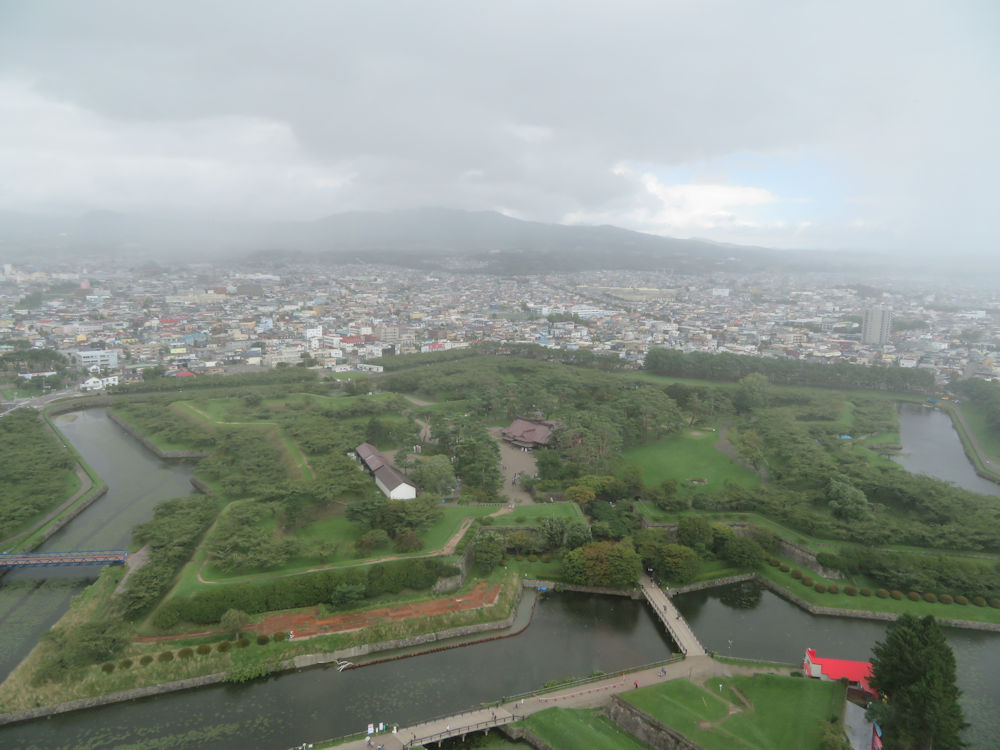
View of Goryoukaku, the pentagonal fort from the Goryoukaku Tower. Construction started in winter of 1858 and the bugyousho relocated and opened office in June 1864.
The following morning we set out to explore Goryoukaku. The Tokugawa government was concerned about the location of the governor’s office (Hakodatebugyousho) in Motomachi because of its proximity to the foreigners’ residential area as well as its vulnerability to cannon fire from ships. It was decided to relocate the bugyousho away from the city and more inland out of cannon reach of ships in the bay. The English brochure of Goryoukaku Tower tells that “Ayasaburo Takeda, a researcher of Dutch studies was ordered to build a new fort.” “He designed a fort modeled after European citadel towns.” Construction started in winter of 1858 and the bugyousho relocated and opened office in June 1864. Goryoukaku and the bugyousho’s operation as a Tokugawa appointed governor’s office was short lived. The last Tokugawa shougun Yoshinobu surrendered his rule of Japan to the Emperor in October 1867 and following defeat of his army to the new government, Edo Castle was peacefully surrendered to the Meiji Government in April 1868. The following month, Goryoukaku was also peacefully given up to the representatives of the new government. The civil war however was not yet over. The pro-Tokugawa feudal lords in the Tohoku region led by Aizu (Fukushima) and Shounai (Yamagata) entered into an alliance that continued the war with the new government until finally retreating to Hakodate. The pro-Tokugawa alliance seized Goryoukaku and rule of Hokkaidou for several months until finally being defeated in May 1869.
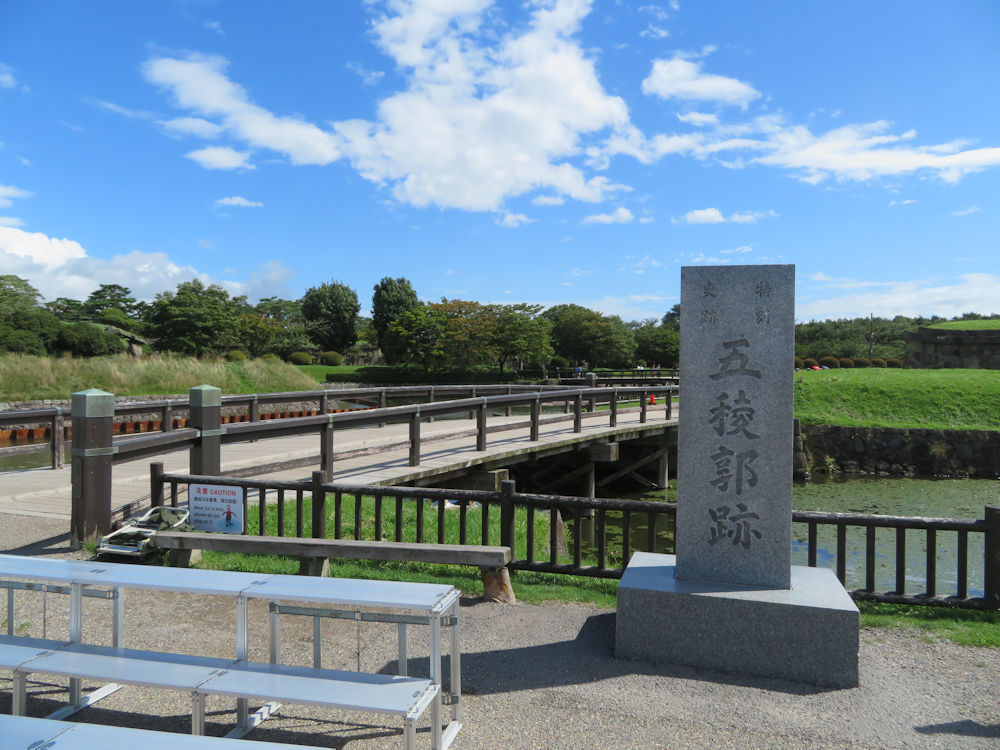
The entrance to Goryoukaku.
Goryoukaku is located about four kilometers north of Central Hakodate. We got off the tram at Goryoukaku Station which is still fifteen minutes away by foot from Goryoukaku. Goryoukaku is surrounded by a moat. The water is sourced from River Kameda. The area inside the moat is 125,500 square meters. It was a quite pleasant walk to go past two bridges and through the entry gate to reach the center of the fort.
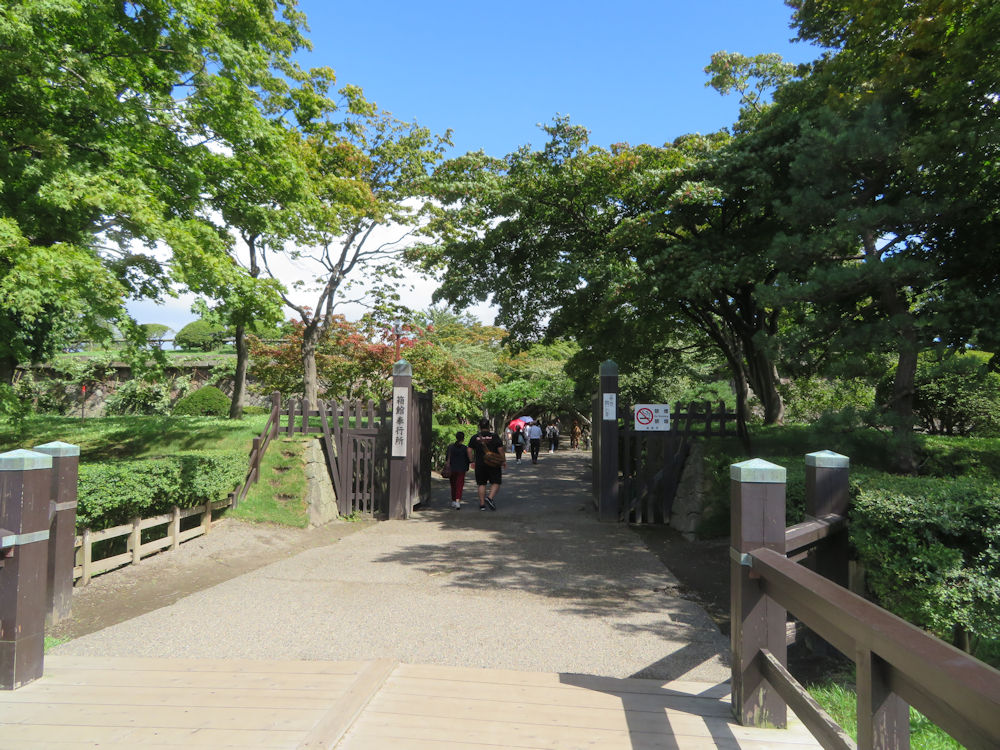
It was a quite pleasant walk to go past two bridges and through the entry gate to reach the center of the fort.
Hakodate Bugyousho stands in the center of Goryoukaku. According to material posted on Goryoukaku Tower’s official website, I understand the governor had more than four hundred staff reporting to him. The residentces of the samurais were located to the north of the bugyousho. After Goryoukaku was repossessed by the Meiji Government in 1869, Hokkaidou Development Bureau (Hokkaidou Kaitakushi) demolished almost all buildings by 1871. The same material tells that the Goryoukaku site was used by the military from 1873 to 1897, and then in 1914 opened to the public as a park. Work to resurrect the Bugyousho building commenced with excavation in 1985. From 2006 reconstruction started based on old maps and photos using traditional Japanese architectural methods and was completed in 2010.
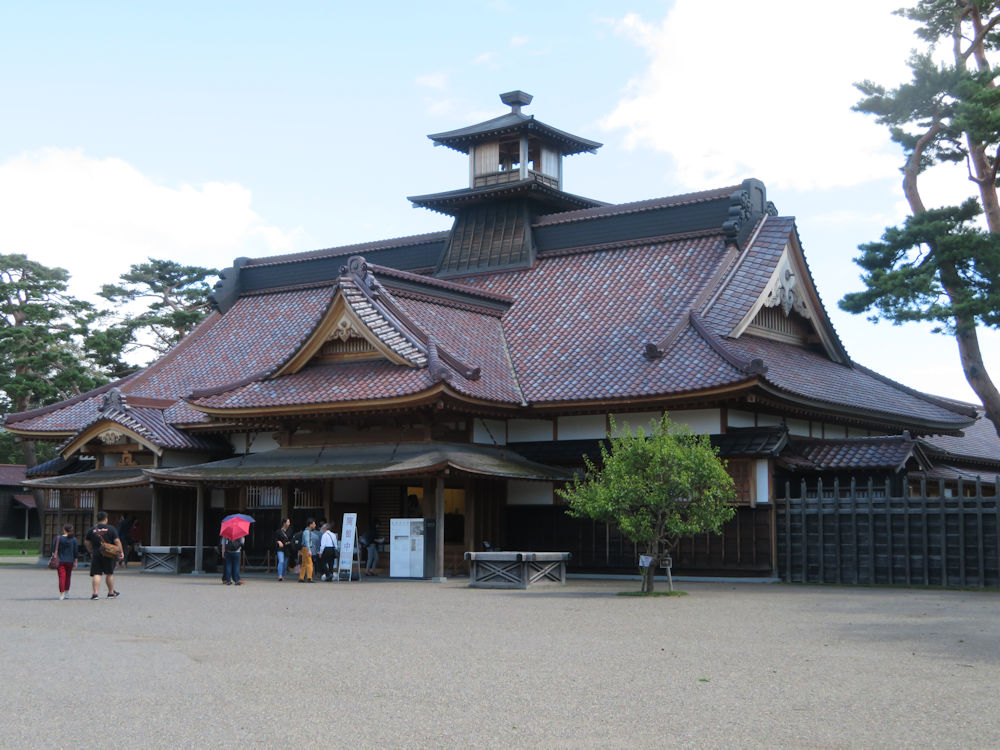
According to material posted on Goryoukaku Tower’s official website, I understand the governor had more than four hundred staff reporting to him.
It is worth paying the admission fee of five hundred yen to see the main reception room and the three rooms behind for the lower ranking samurais, as well as to visit the display area that tells us a lot about Goryoukaku and Japan’s civil war that finally ended in Hakodate.
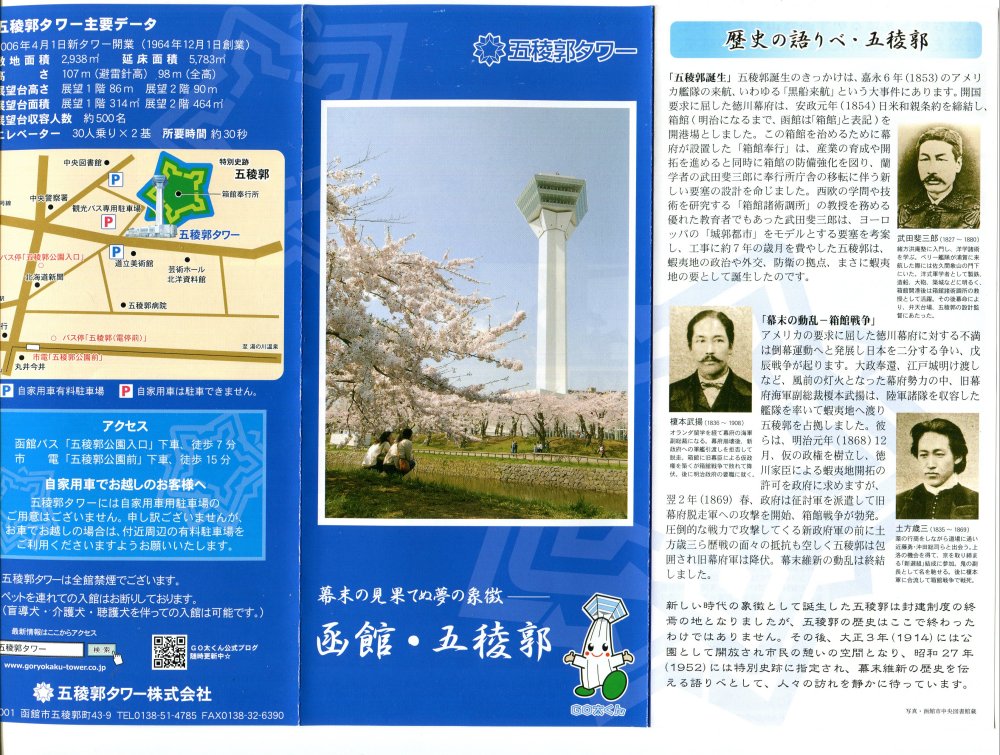
I found Goryoukaku Tower's brochure quite helpful. English versions are available on their website. It may be helpful for you if you took a brief look before your visit.
We then visited Goryoukaku Tower. The present 107 meters high observatory
tower replaced the former 60 meters high tower in 2006. The admission fee
to the observatory level about 90 meters high is relatively expensive at
900 yen but well worth it for the superb view overlooking Goryoukaku. There
are interesting displays of Goryoukaku and its history on the two observatory
level floors. Of particular interest to me was the detailed series of events
of the siege of the fort by the pro-Tokugawa samurais and its recapture
by the new government army. Goryoukaku’s website has a good English page
with a brochure that should be helpful for visitors.
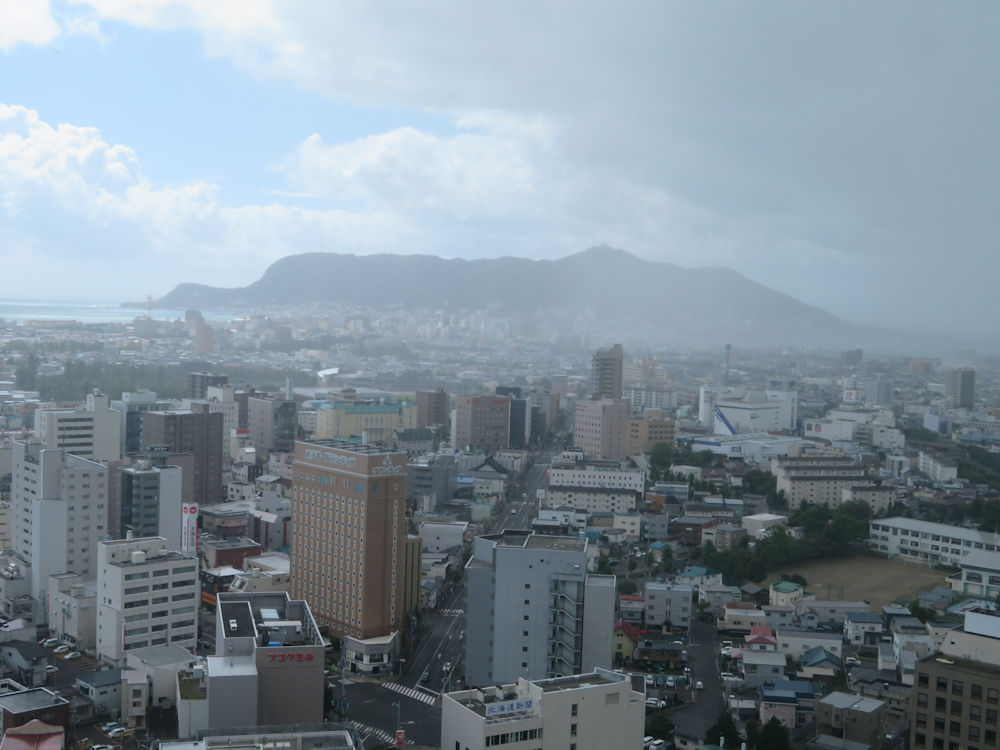
Looking east towards Mount Hakodate from Goryoukaku Tower.
Before going back to the hotel in the city center, we made a brief visit to the eastern seaside of Hakodate. It’s only a twenty minutes’ walk at most from JR Hakodate Station to go east and get to the eastern shore, the opposite side of Hakodate Bay. We had a good view of Mount Hakodate from the seaside.
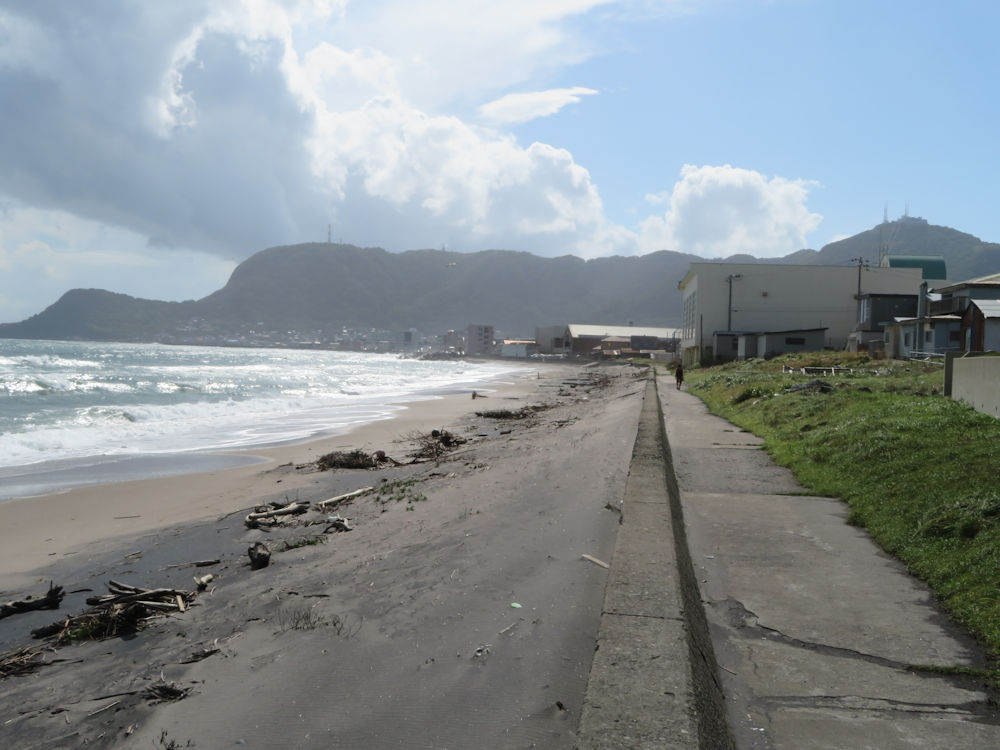
We had a good view of Mount Hakodate from the eastern seaside.
One attraction for us in Hakodate was to enjoy its famous night scenery from Mount Hakodate. We had been advised that the best time to take photos would be just before sunset which we knew was 18:20 on that day. We left the tram at Juujigai Station from where it’s a fifteen minutes’ walk uphill to the ropeway station. Although we set out early and arrived at the ropeway station at half past five, there was already a long queue ahead of us. The fare of 1,280 yen for a round trip seemed expensive but what other choice do you have when it can take you to the top in only three minutes. There’s quite a lot of space at the top, so I’m sure you can find a good spot if you arrive a bit early. We took a spot to wait for sunset.
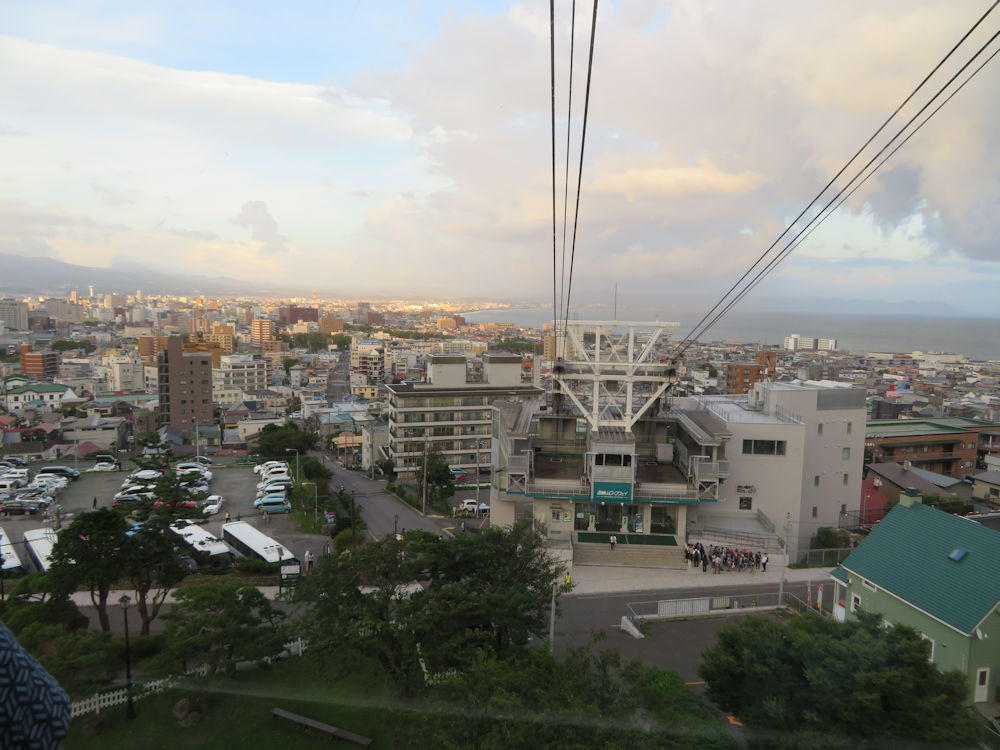
It takes only three minutes to arrive at the top by ropeway.
Shortly after six it started to rain, and we saw low clouds rapidly developing. Then there was an announcement that the ropeway would be closed because of the approaching thunderstorm and advice that the last ropeway would leave 18:30 and if we missed it that we would have to walk down. We had planned to have dinner at the top but now we had no alternative but to go back to the ropeway, join the long queue and descend. We were still lucky because had we come a little later we would have had no time at the top. We had dinner at a seafood restaurant that evening. We never imagined that at 3am the following morning there would be a huge earthquake that caused an entire blackout in Hokkaidou.
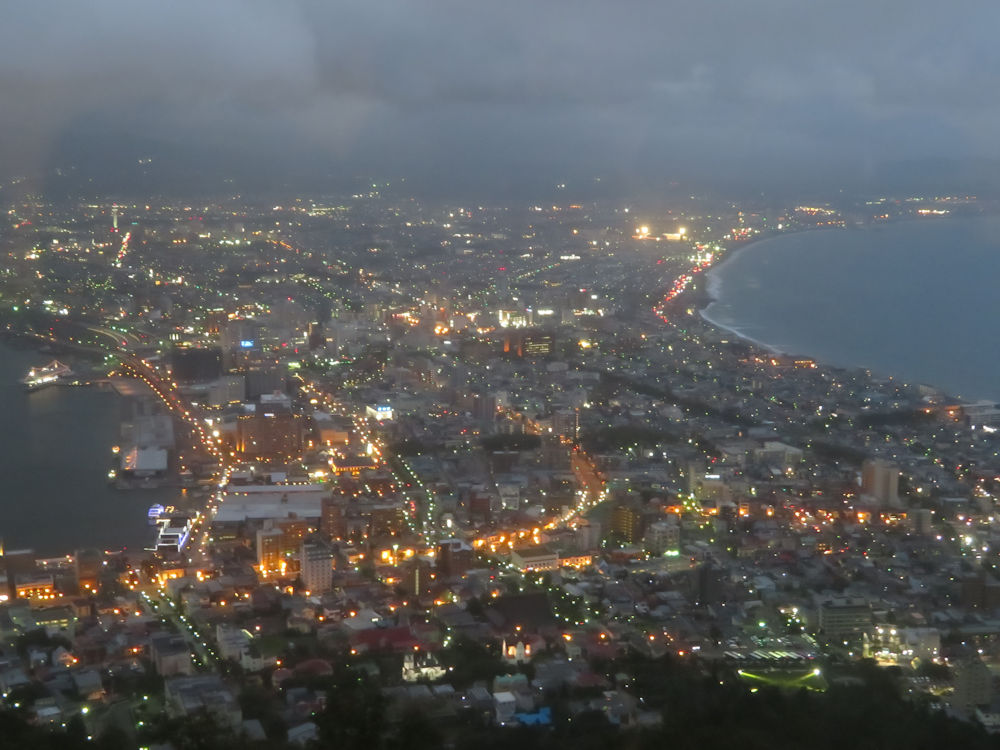
We had a good view of Mount Hakodate from the eastern seaside.
I didn't however forget to pur chase local sake. On this occasion I bought a 720 milliliter bottle of a spucial junmai Kunimare, which I enjoyed at a restaurant in Hakodate during my stay. Kunimare is dry but not weak and goes very well with seafood.
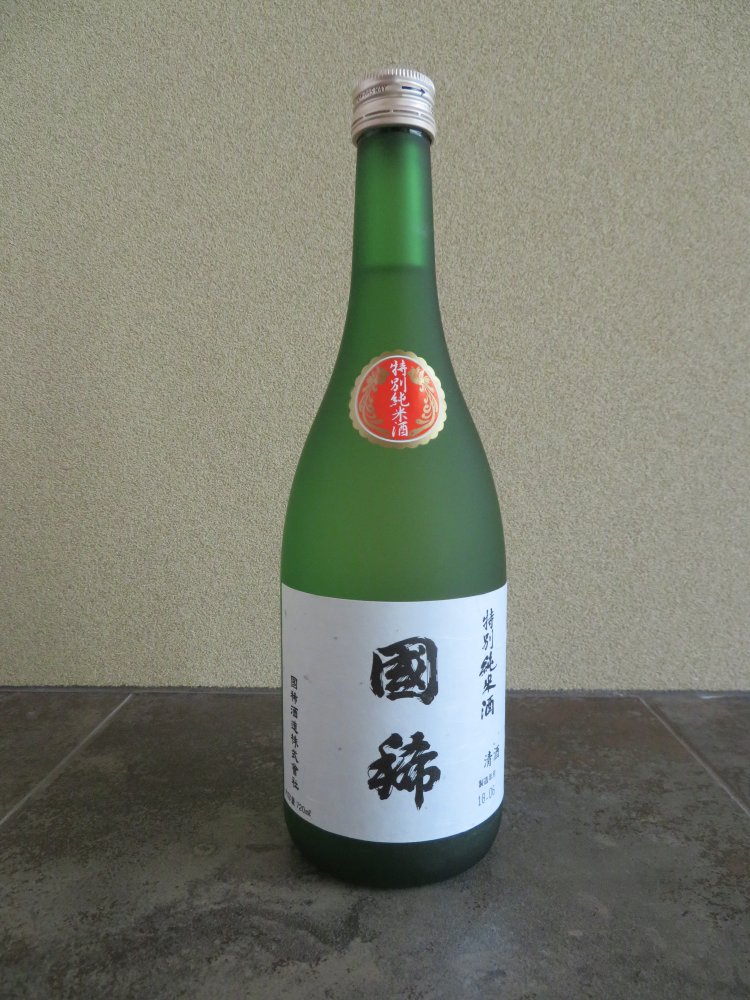
On this occasion I bought a 720 milliliter bottle of a spucial junmai Kunimare, which I enjoyed at a restaurant in Hakodate during my stay.